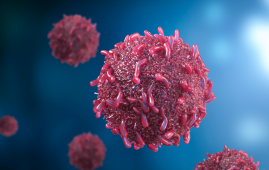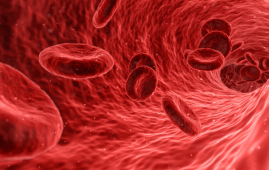

On October 11, 2024, a new research paper was released in Oncotarget’s Volume 15, entitled “Relationship between the expressions of DLL3, ASC1, TTF-1, and Ki-67: First steps of precision medicine at SCLC”
This study, conducted by researchers from the Federal University of Ceará in Brazil and partner institutions in Brazil, Argentina, and Spain, reports significant discoveries on small cell lung cancer (SCLC), one of the most aggressifcancerve kinds of lung cancer with few treatment options. The study demonstrates how distinct biomarkers in SCLC tumors could lead to more tailored and targeted therapy for these individuals.
SCLC accounts for approximately 15% of all lung cancer cases and is characterized by its fast spread and resistance to various treatments. Currently, the five-year survival rate for SCLC patients is less than 5%. Recent breakthroughs in precision medicine seek to improve these outcomes by recognizing and targeting the distinct characteristics of each patient’s tumor.
Samuel Silva, Juliana C. Sousa, Cleto Nogueira, Raquel Feijo, Francisco Martins Neto, Laura Cardoso Marinho, Guilherme Sousa, Valeria Denninghoff, and Fabio Tavora examined tumor samples from 64 SCLC patients using traditional and digital pathology tools. Their findings showed promising outcomes for two of the biomarkers studied: Delta-like ligand 3 (DLL3) and Thyroid transcription factor-1 (TTF-1).
DLL3 was found in more than 70% of the tumors, indicating its potential as a promising target for therapies such as Tarlatamab. Another significant observation concerned TTF-1 expression; patients with TTF-1-positive tumors had higher survival rates, highlighting its potential as a prognostic marker for refining diagnoses and predicting patient outcomes.
The authors also noted that, “The use of digital pathology software QuPath enhanced the accuracy and depth of analysis, allowing for detailed morphometric analysis and potentially informing more personalized treatment approaches.”
In conclusion, the study implies that clinical trials targeting biomarkers such as DLL3 and TTF-1 could improve SCLC patient outcomes by personalizing treatments to specific biomarker profiles. This study represents a significant advance in precision medicine for SCLC.
For more information: Silva, S., et al. (2024) Relationship between the expressions of DLL3, ASC1, TTF-1 and Ki-67: First steps of precision medicine at SCLC. Oncotarget. doi.org/10.18632/oncotarget.28660.
more recommended stories
 Can Ketogenic Diets Help PCOS? Meta-Analysis Insights
Can Ketogenic Diets Help PCOS? Meta-Analysis InsightsKey Takeaways (Quick Summary) A Clinical.
 Silica Nanomatrix Boosts Dendritic Cell Cancer Therapy
Silica Nanomatrix Boosts Dendritic Cell Cancer TherapyKey Points Summary Researchers developed a.
 Vagus Nerve and Cardiac Aging: New Heart Study
Vagus Nerve and Cardiac Aging: New Heart StudyKey Takeaways for Healthcare Professionals Preserving.
 Cognitive Distraction From Conversation While Driving
Cognitive Distraction From Conversation While DrivingKey Takeaways (Quick Summary) Talking, not.
 Fat-Regulating Enzyme Offers New Target for Obesity
Fat-Regulating Enzyme Offers New Target for ObesityKey Highlights (Quick Summary) Researchers identified.
 Spatial Computing Explains How Brain Organizes Cognition
Spatial Computing Explains How Brain Organizes CognitionKey Takeaways (Quick Summary) MIT researchers.
 Gestational Diabetes Risk Identified by Blood Metabolites
Gestational Diabetes Risk Identified by Blood MetabolitesKey Takeaways (Quick Summary for Clinicians).
 Phage Therapy Study Reveals RNA-Based Infection Control
Phage Therapy Study Reveals RNA-Based Infection ControlKey Takeaways (Quick Summary) Researchers uncovered.
 Pelvic Floor Disorders: Treatable Yet Often Ignored
Pelvic Floor Disorders: Treatable Yet Often IgnoredKey Takeaways (Quick Summary) Pelvic floor.
 Urine-Based microRNA Aging Clock Predicts Biological Age
Urine-Based microRNA Aging Clock Predicts Biological AgeKey Takeaways (Quick Summary) Researchers developed.

Leave a Comment